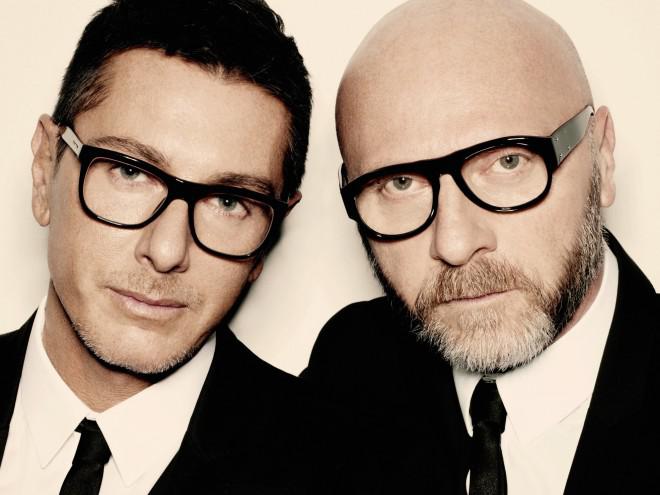Contents
Summary
Domenico Dolce and Stefano Gabbana’s romantic relationship was the axis of their business. Together, the duo began fashion label ‘Dolce and Gabbana’ from scratch and transformed it into a billion-dollar empire.
Early Years
Domenico Dolce and Stefano Gabbana hailed from modest families and began their illustrious fashion career as outsiders.
Born in 1958 in Polizzi Generosa, Sicily, Dolce’s father was a tailor and his mother sold fabrics and apparel in the local emporium. influences by his father who made bridal wear, innerwear, heavy outerwear and accessories, he enrolled in a three-year course in fashion design at Marangoni Institute but dropped out after four months, confident he knew enough. Gabbana hailed from Milan. His father worked in a printing factory and mother, for a laundry service. His interests as a teenager were pop music and riding his motorino.
Gabbana studied graphic design in high school and graduated from Istituto Superiore per le Industrie Artistiche, a design institute in Rome. The duo met in 1980. Dolce found a job as an assistant to designer Giorgio Correggiari. He met Gabbana at a nightclub and was drawn to him. Correggiari hired Gabbana to work on sportswear, with Dolce teaching him sketching and tailoring; in the process they became a couple.
Fashion
Luxury fashion house Dolce and Gabbana was founded in 1985 by Italian designers Domenico Dolce and Stefano Gabbana. Born in Palermo, Domenico honed his skills under his father who was a tailor and then shifted to Milan where he worked at a design studio. Milan- bred Stefano studied graphic design and planned to get into advertising, but unsatisfied with his career path, he turned to Fashion.
The duo initially got acquainted in a nightclub and then worked as assistants at the atelier of Giorgio Correggiari in Milan. In two years, they opened a design consulting studio which would evolve to become legendary fashion brand “Dolce and Gabbana”. The duo debuted womenswear in October 1985 alongside five new labels at Milan Fashion Week. Interestingly, since they did not have the required funds to hire runway models they requested friends to model for them and help out with their own accessories to complement the clothing. The showing was titled “Real Women”. It was not a fairytale debut. Sales were so disappointing Gabbana canceled fabric for their second collection. However Dolce’s family helped out and coincidentally the fabric company too had not received the cancellation on time so the fabric was ready!! With Lady Luck smiling on them.. Dolce and Gabbana presented the next collection in 1986 and opened their first store.
In 1987 they launched knitwear and in two years- beachwear, lingerie and leotards. In 1988 they produced ready-to-wear in Dolce’s family-owned atelier in Legnano Milan. The first men’s collection appeared in 1990. In 1994 they launched the youthful D&G label inspired by street style. However it was their fourth collection that made an impact on Italian fashion. The campaign shot in Sicily featured model Marpessa Hennink in a black bustier, skirt suit and sculpted bodice worn over a skirt, with a backdrop of nuns, ornate crosses and barber shops. The black palette was supplemented with rigid white blouses.
The first incarnation of what was to become known as “The Sicilian Dress” appeared in this collection—a modern interpretation of the black slip — described by Hal Rubenstein as “the essence of Dolce and Gabbana. It takes its cue from a slip—but it’s a slip that’s adorned Anna Magnani and it’s a silhouette that has graced Sophia Loren. The straps fit tight to the body… the neckline runs straight across but gets waylaid at least twice, once on each side to caress each breast and in the middle to meet an uplifting tuck that’s giving a gentle push up. The slip doesn’t just slide down but comes in at the waist to hold the figure firmly but not too tightly and then widens to emphasise the hips…”
Over the years iconic pieces include corset dresses- crystal-encrusted bodysuits- sculpted midis- floral prints- cat-eyes- pearls and floral accessories. In 1989 Dolce and Gabbana opened a store in Japan in collaboration with Kashiyama and began exporting to the United States where they opened a showroom the following year. In 1992 they presented a men’s line and debuted fragrances for which they were awarded “Oscar des Parfums” for Best Male Perfume from the French Parfum Academy.
During the Nineties sales were reportedly $500 million. Moving forward SS90 referenced the mythological painting of Raphael while FW91 was a rage due to the intricately embellished corsets. FW92 was inspired by Fifties’ cinema and the crystal embellished body suits were a sell-out. that year their men’s collection received “Woolmark Award for Most Innovative Men’s Collection of the Year.”
Dolce and Gabbana carved a niche on the international fashion map when Madonna wore a corset encrusted with gemstones and a jacket from Dolce and Gabbana at the New York premiere of “Truth Or Dare: In Bed With Madonna.” The duo partnered Madonna in 1993 to design costumes for her album tour. In an interview Madonna stated “Their clothes are sexy with a sense of humor—like me.”
Elle wrote about them as “From Madonna to Scarlett, from Linda to Gisele, Dolce and Gabbana have shaped the style of a generation of women. They invented the corset dress, they brought us sharply feminine suits with white shirts that automatically undid at your cleavage, they gave us statement coats and feminine floral prints…”
In 1995 their collection incited controversy with the British and Italian press when they selected the American gangster motif as inspiration. Unfazed, Dolce and Gabbana continued to work with Madonna, designing costumes for her promotional tours Madonna appeared in Dolce Gabbana 2010 campaign.
In 2002 the corsets that were a key part of Dolce and Gabbana’s design were reinterpreted by several designers which led to Dolce and Gabbana holding private viewings in order to sell their collections to pre-empt copying of their designs before they were sold. In 2003 the men’s line took its inspiration from iconic football stars. By 2005, the turnover was reported as €597 million. The following year the company began diversifying into accessories, leather goods and cosmetics — with Scarlett Johansson as the face of the advertising campaign.
In 2012 the duo strengthened the conglomerate by merging D&G with Dolce and Gabbana. Per New Yorker: “Dolce and Gabbana are becoming to the two-thousands what Prada was to the nineteen-nineties and Armani was to the nineteen-eighties.” And speaking of awards.. in 2003 GQ named Dolce and Gabbana “Men of the Year”. The following year readers of British Elle voted Dolce and Gabbana “Best International Designers at Elle Style Awards”.
Dolce and Gabbana celebrated the twentieth anniversary of their brand on 19 June 2010 at Piazza della la Scala and Palazzo Marino in Milan. Per Vogue: the duo explained- “If you want to speak to your audience you need to talk about your experiences; your point of view, your life. Not just make twenty-five cool outfits. If you’re honest as a designer, you talk about your life. You don’t talk about twenty-five outfits with a stylist going- “Is this cool like this?” No.”
Dolce and Gabbana continue to rule global fashion and their celebratory dresses for the A-list are in demand. Speaking of their recent collection Vogue wrote: “No one looking at this collection would mistake the shirred minidress in a mashup of polka dots and florals or the bustiers and bra tops in checkerboard black and white for any label other than D&G. The designers command of their signatures is key to their success.”
The duo continue to stay abreast of the trends and are using high technology to reach out to a wider consumer base. Per Vogue: “the Italian fashion duo will unveil Collezione Genesi- a nine-piece NFT – or non-fungible token – collection… Five of the Collezione Genesi pieces… have digital versions that can be used in the metaverse…” And that’s not all. The duo is diversifying from fashion into real estate. Per BoF: The Italian brand is partnering with real estate developers to build branded residential apartments in Miami and Marbella as well as a hotel in the Maldives.
Personal Life
Domenico Dolce and Stefano Gabbana were romantic partners for two decades and have maturely maintained a professional relationship after publicly acknowledging the end of their personal connection in 2005. Though they share ownership of the brand, they live in separate apartments in the same building in Milan, across the street from where they work. They have different boyfriends and the two couples are often seen together.
Controversial Duo
In 2013, Domenico Dolce and Stefano Gabbana were charged and convicted of tax evasion. An Italian court found them guilty of failing to declare millions of euros of revenue earned through a D&G subsidiary company, Gado, based in Luxembourg. However, they denied the charges, appealed to overturn their conviction and were pronounced innocent in October 2014, by the appellate court. In 2018, they were once gain in the news for a D&G brand campaign featuring an Italian model eating Italian cuisine with chopsticks, which was pronounced belittling to Chinese culture. With Chinese consumers forming a significant part of the luxury market, the brand lost a large part of its Asian-Pacific market.
In 2015, Dolce’s comments about in vitro fertilisation sparked widespread criticism. In an interview with Panorama magazine, Dolce said, “I am gay. I cannot have a child. I believe you cannot have everything in life…. You are born from a father and a mother. Or at least that is how it should be. For this reason I am not convinced by what I call children of chemistry, or synthetic children. Uteruses for rent, sperm chosen from a catalogue.” British singer-songwriter Elton John, who has children by IVF with his husband David Furnish, called for a boycott of the D&G brand. This sparked further controversy, with Gabbana later calling Elton John a “fascist”.
In 2016, the duo became the first fashion house to dress Melania Trump. The ensuing uproar resulted in their cheeky #BoycottDolce&Gabbana’ campaign where the designers mimicked social media protests! Further, when Catwalk Italia posted on its Instagram account a collage of Selena Gomez in red dresses, including one of Dolce Gabbana, Stefano Gabbana commented: “È proprio brutta!!!” Translation — “She is really ugly.” Thousands of enraged people demanded he apologise but Gabbana, instead, further angered them by posting on Instagram: “Omfg #pleasesaysorrytoselena.”
Notable Accolades
- 1991: International Woolmark Prize
- 1993: Perfume’s Academy “Most Feminine Flavor of the Year” for Dolce & Gabbana Parfum.
- 2009: The City of Milan awarded them Ambrogino Gold Medal
References
- Official website Dolce-Gabbana
- Rendez-Vogue: Domenico Dolce and Stefano Gabbana Vogue
- Dolce-Gabbana Is Bringing NFTs To The Traditional World Of Couture Vogue
- Domenico Dolce and Stefano Gabbana BoF
- Facebook of Dolce-Gabbana Facebook
- Dolce-Gabbana to Open Luxury Condos and a Hotel
- Twitter of Dolce-Gabbana Twitter
- When Dolce met Gabbana The New Yorker
- Instagram of Dolce-Gabbana Instagram
- Dolce-Gabbana renews eyewear licence deal with Luxottica until 2029 Fashion Network
- LinkedIn of Dolce-Gabbana LinkedIn
- Wiki page of Domenico Dolce Wikipedia
- Youtube channel of Dolce-Gabbana Youtube
- Wiki page of Stefano Gabbana Wikipedia
- Wiki page of Dolce-Gabbana Wikipedia
- 13 Christmas Markets In The UK That Are Worth Travelling For Vogue
- Dolce-Gabbana: Fashion’s golden duo CNN
- Readers interview Dolce-Gabbana The Guardian
- Dolce and Gabbana Interview
- Dolce-Gabbana: Out Loud Harpers Bazaar





